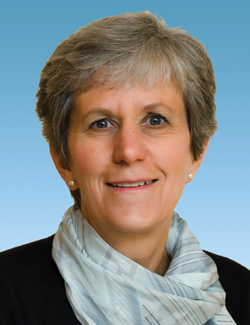“I once read a silly fairy tale, called the three Princes of Serendip: as their Highnesses travelled, they were always making discoveries, by accidents and sagacity, of things which they were not in quest of … now do you understand Serendipity?”
—Horace Walpole, letter to Horace Mann (28 January 1754)
Innovation in optics never stops.
Science and technology advance due sometimes to specific efforts and sometimes to a dose of luck. As Pasteur said, however, “Fortune favors the prepared mind”—and it is interesting to note that the three princes of Serendip, while most often connected with accidental discoveries, were also credited with wisdom. Innovation relies on discoveries whose context might not develop until later, demonstrating the critical importance of fundamental research support.
A case in point: 4He is a boson that fills birthday balloons and purges cryogenic hydrogen lines safely for NASA rockets. Optical pumping of its fermionic cousin, 3He, in the presence a Rb-K mixture can be used to align a large fraction of the nuclear spins. This spin-transfer effect was reported in 1960 by physicists interested in magnetic relaxation. Thirty-five years later, the phenomenon with the polarized helium was applied to enhance contrast in lung MRIs.
At cryogenic temperatures, 4He becomes a zero-viscosity superfluid, and in the 1970s studies of the properties of 3He at millikelvin temperatures were of interest due to its different spin. Legend has it that Doug Osheroff noticed “glitches” in the material’s cooling curves that turned out to be superfluid transitions. This was in the 1970s—but the discovery was not recognized with the Nobel Prize in Physics until 1996.
In the case of 3He, fundamental research was performed with no anticipation of the outcome. Is it serendipity that some results have proven useful? Only, I would argue, if—in the spirit of Walpole—you credit the “princes” that funded and performed the work with both good fortune and long-term wisdom.
The award of half of the 2018 Nobel Prize to Donna Strickland and Gerard Moureau is an example of an advance made with anticipation of potential utility, but one that has blossomed to unanticipated breadth. The compression of optical pulses presented a wealth of challenges—yet the 1985 work that permitted the formation of terawatt optical pulses led to advances in other areas ranging from nonlinear optics to laser-based corrective eye surgery. Some 33 years after their seminal paper, early-morning phone calls brought the good news from Stockholm.
Innovation in optics never stops. It will be on full display in this month’s OFC Conference in San Diego, Calif., USA, the world’s premier conference on optical fiber and communication. That focus is mirrored in this month’s Optics & Photonics News, which includes feature articles on in-fiber silicon photonics, new telecom wavelength windows, and the accomplishments of the late Charles Kao. Such innovation also constitutes one of The Optical Society’s i4 core values:
“Innovation. The process and products of scientific inquiry are central to the generation of knowledge in optics and photonics. Support from governments, industry, and academia are integral to ongoing discovery and innovation that moves society forward. The process of discovery and innovation must be free from political pressure or influence, and rely on proven and accepted scientific methods.”
—Ursula Gibson,
OSA President
See www.osa-opn.org/link/pm-march-2019 for a few references related to this message.

